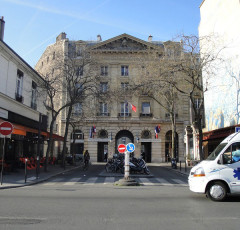The Saint-Antoine Research Center (CRSA) was recreated by INSERM and Sorbonne University on January 1, 2019, and consists of 13 teams. It brings together approximately 400 staff, including 34 statutory researchers, 96 university lecturers, 44 hospital practitioners, 32 post-doctoral students, 60 PhD students, 32 masters students, 56 statutory technical staff (Sorbonne University or INSERM), and 41 non-statutory technical staff.
Our Research Center was designed to optimize the strong translational research potential of the teams involved in rapidly evolving fields such as oncology-hematology and metabolism-inflammation. The CRSA brings together staff with a wide range of expertise, from cellular and molecular biology, via preclinical animal experimentation, to clinical investigation, and incorporates translational research from the bench to the patient's bedside.
Our teams are thus structured around two major areas: oncology-hematology and metabolism-inflammation. They conduct projects spanning basic biology to integrated preclinical and clinical physiology, pathophysiology, and therapeutics. Research programs in oncology-hematology are mainly focused on digestive and gynecologic cancers, in vitro erythropoiesis, leukemogenesis, and graft versus host disease (5 teams). Teams of the metabolism-inflammation pole focus on hepato-biliary and digestive inflammatory diseases, adipose tissue diseases and associated comorbidities, the pathophysiology of osteoarthritis in relation to metabolic imbalances, Alzheimer's disease, IGF1 signaling, and associated cardio-metabolic or growth pathologies, and cystic fibrosis (8 teams). 12 of these 13 teams work closely with the clinical and biological departments of the Saint-Antoine, Trousseau, and Tenon hospitals. They are mainly located in 2 buildings (Saint-Antoine Faculty of Medicine, and the Kourilsky building) covering about 8000 square meters.
All teams have a common administrative cell, L1 and L2 culture rooms, and a very high-level EOPS animal housing facility. We also benefit from privileged access to technological platforms for cell imaging, histology, flow cytometry, and "omics" analysis platforms.
Welcome to the Saint-Antoine Research Center!
Pr Bruno Fève, director of the CRSA
INSERM
Kourilsky Building
34 rue Crozatier - 75012 Paris
France
Sorbonne Université Medicine
Saint-Antoine Site
27 rue Chaligny - 75012 Paris
France
